Why would I need to configure the call quality settings?
If you are noticing issues with call quality in your clinic, configuring the call quality settings for your clinic can be helpful to warn callers of any potential issues with their device or connection speed, giving them an insight as to why these may be occurring and automatically adjust quality depending on network conditions.
One of the biggest impactors on the quality of a call is the network conditions of each of the participants in the call, where factors such as the amount of bandwidth, latency, packet loss, and jitter all contribute to the quality of the connection.
Organisation and Clinic Administrators have access to configure these settings.
To configure the Call Quality settings in your clinic:
| From your Clinic waiting area dashboard page click on Configure. | 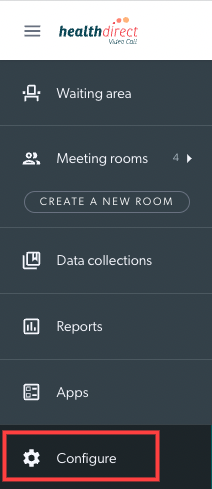 |
| Click on Call Quality | 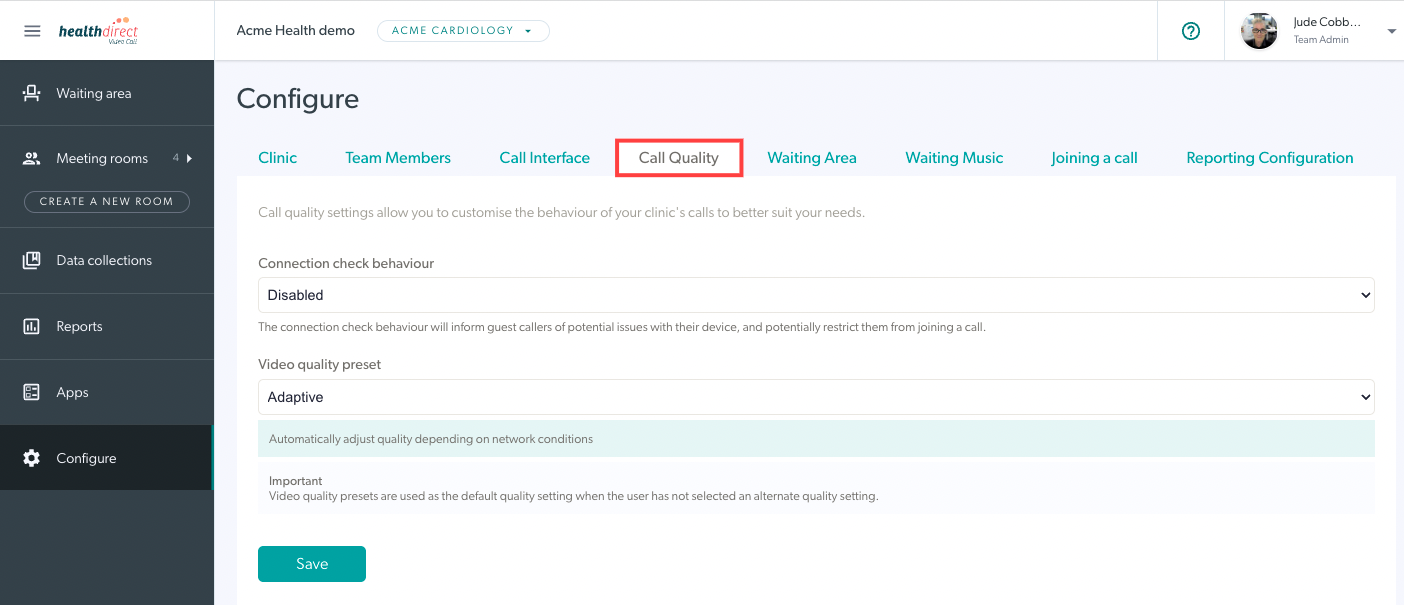 |
Connection check behaviour
When enabled, an automatic connection check will be performed as a caller is adding their details prior to entering your waiting area. This can be helpful to warn of any potential issues with a caller's device or connection speed, rather than them potentially experiencing bad call quality, including dropouts. The more strict settings will block calls if they detect issues that will impact on the call connecting successfully. You can decide which behaviour you would like to set for your clinic, depending on your needs. You can set a connection check to perform in one of the following ways:
| Permissive: In this mode, the connection will be checked, callers will be warned if any tests fail or the bandwidth is lower than required to perform a good quality Video Call. This warning will be helpful for your patients as they will be made aware that some issues may be experienced. |
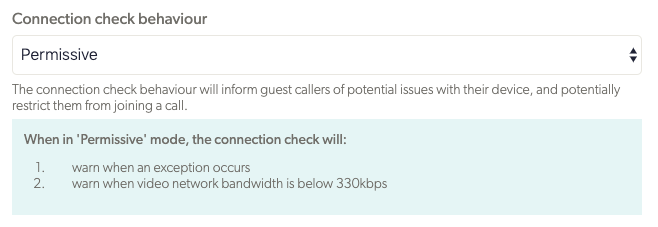
|
| Exception only: Warns if there are any issues with the user's device or equipment. Exceptions are defined as any problems encountered in a pre-call check such as no microphone or camera detected or low bandwidth issues. |  |
| Restricted: In this mode, the call will be blocked if an exception occurs and a warning will appear if the bandwidth is below 330kbps (the minimum required for Video Call). In addition, the call will be blocked if the bandwidth is below 180kbps. | 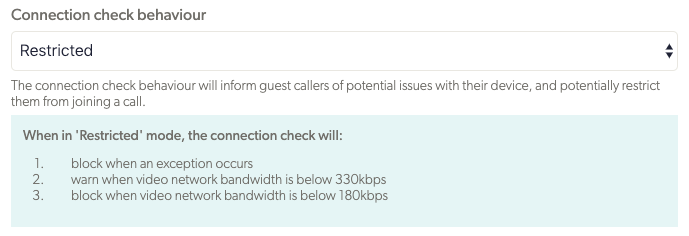 |
| Strict: This is the strictest setting and will block any call if an exception occurs or if the bandwidth is below 330kbps. |  |
| Disabled: This disables the automatic connection check functionality and no warnings or blocks will occur. Callers can still conduct a pre-call test to check their set up. |  |
| Remember to click Save if you have made any changes. | 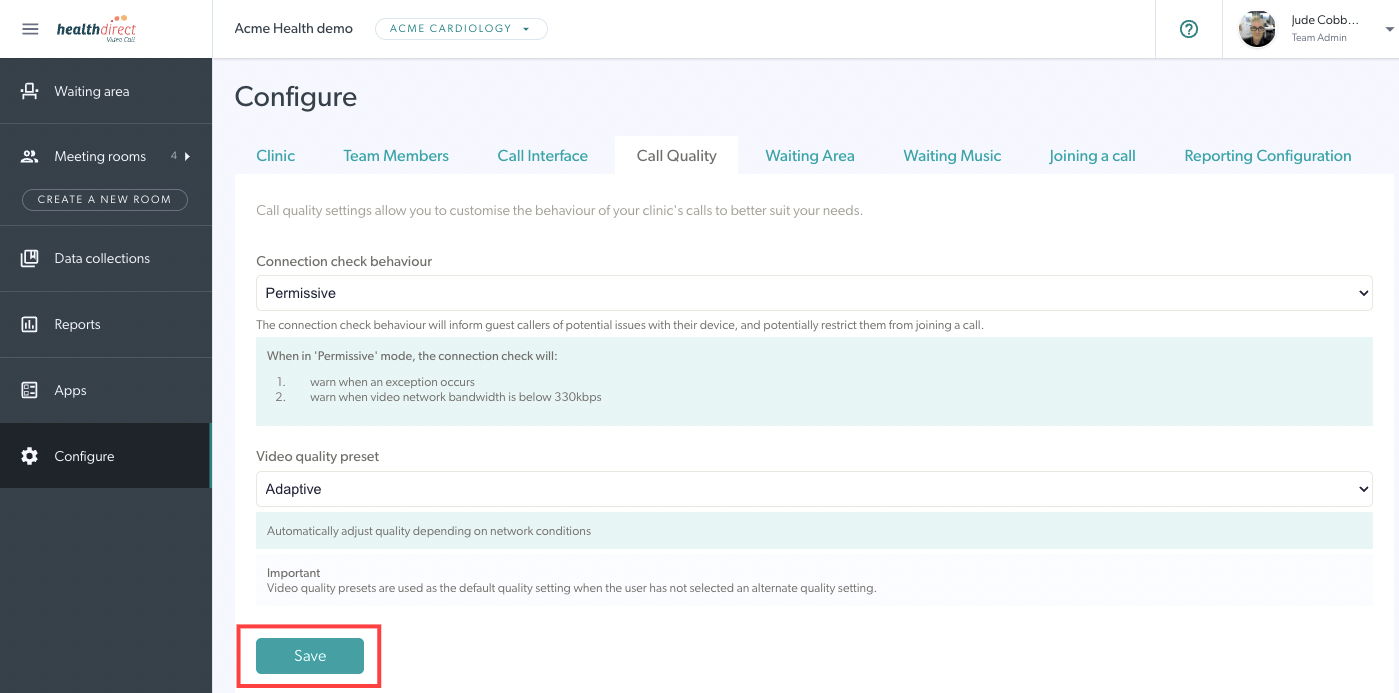 |
Video quality preset
When you configure a video quality preset at the clinic level, this will apply to all Video Calls in your clinic. You may need to configure a preset if you and your team have been experiencing quality issues with the calls in your clinic. This can help minimise any potential quality issues including dropouts. Please note that video quality settings can be changed within an individual call at any time, if the conditions allow or require it. Find out more about Changing Your Video Quality Settings in a Call.
You can set the following video quality presets in your clinic:
| Adaptive: This setting will result in Video Call automatically adjusting video quality settings depending on the available network conditions. This should work well under most conditions and you will only need to change to another setting if you experience video quality issues. |
 
|
| High quality: In high quality mode, Video Call will attempt to send video at 30 frames per second (FPS) with a target resolution of 1280 x 720 on Safari and 960 x 720 on other browsers. This setting requires an estimated bandwidth capacity of 2Mbps per connection. Select this quality if you know you have plenty of bandwidth and your video call screens do not look as good as they should. |  |
| Medium quality: In medium quality, Video Call will attempt to send video at 30 frames per second (FPS) with a minimum resolution of 480x360 and a target and maximum resolution of 640x480. This setting requires an estimated bandwidth capacity of 1Mbps per connection. |  |
| Low quality: Low quality starts to sacrifice video quality in an attempt to make video call possible where bandwidth is compromised. This preset attempts to send video at 30 frames per second (FPS) at a minimum resolution of 160x120, and with a target and maximum resolution of 320x240. This setting requires an estimated bandwidth capacity of 256 Kbps per connection. You can select this option if you are experiencing issues with video quality during your call. |  |
|
Bandwidth restricted: If bandwidth is very low, this setting will further sacrifice video quality and smoothness in an attempt to prioritise audio. In this setting (for non Safari users), video will be attempted to be sent at 20 frames per second (FPS), with a target maximum resolution of 160x120, with no minimum resolution. If using Safari, due to an inability to support video resolutions below 320x240, video will be sent at 15 frames per second (FPS), with a target resolution of 320x240. |
 |
| Remember to click Save if you have made any changes. |  |
Wondering what callers see when you configure these settings?
Please refer to this help article: Configure the Call Quality settings for your clinic - Caller Experience